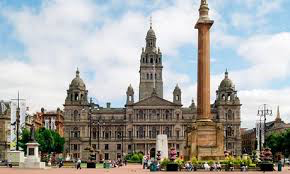Voting With Your Feet
Here's an extract of an interesting article by a chap called George Eaton which appeared in the New Statesman recently - on the decline of Labour support in Scotland.
But I was struck at the drop in voter support from a peak of 910,000 and 785,000 in 1999 - to only 630,000 and 525,000 votes in 2011.
And what's incredible is that despite that obvious and enormous change, trade unions such as Unite continue with their slavish support for the Labour Party - when so many of their members have voted with their feet.
Labour in Scotland
The more pressing question is why Labour has made so little progress over the last two years. Although the polls have narrowed in recent months, the SNP maintains a four to five point lead over Labour in terms of Holyrood voting intentions. Moreover, Salmond’s administration enjoys strong underlying approval ratings: 57 per cent of the Scottish electorate (together with 53 per cent of Labour voters) are satisfied with the performance of the Scottish government. These are impressive numbers for a party halfway through its second term in office.
To some extent, Labour’s problem is presentational. It hasn’t yet persuaded Scots that it is an authentically Scottish party, run from Scotland, in Scotland’s interests. Nor can it offer a clearly defined policy platform. Scottish Labour leader Johann Lamont has established a commission to review the party’s approach to universal benefits. While they wait for the commission’s report, however, her colleagues are tying themselves in knots trying to carve out coherent positions on concessionary travel, free prescriptions and university funding.
But Labour also faces a deeply-rooted, structural challenge. The party has lost support at every Holyrood election since the first in 1999. From a peak of nearly 910,000 constituency and 785,000 list votes under Donald Dewar, it slumped to a low of 630,000 constituency and 525,000 list votes in 2011 under Iain Gray.
Significantly, the largest fall in its vote share didn’t occur in 2007 or 2011, as a result of a surge in SNP popularity. It occurred in 2003, when large chunks of the left vote broke away to smaller, more radical parties such as the Scottish Socialists and the Greens. These voters haven’t returned to Labour and there is little sign that they intend to.
There has been a broader weakening of Labour’s base, too. At the 2011 elections, Labour trailed the nationalists by 14 per cent among Scots who identified themselves as working class and by 19 per cent among Scots who qualified as working class according to official criteria. The SNP was also the party of choice for public sector workers, trade unionists and even Catholics, all of whom Labour would once have considered part of its natural constituency.
Labour is entitled to celebrate the Dunfermline result. The party fought doggedly, against a typically well organised nationalist campaign, to take the seat. But it shouldn’t let this modest success disguise the scale of the task at hand. All the signs still point towards another SNP-controlled parliament in 2016.

